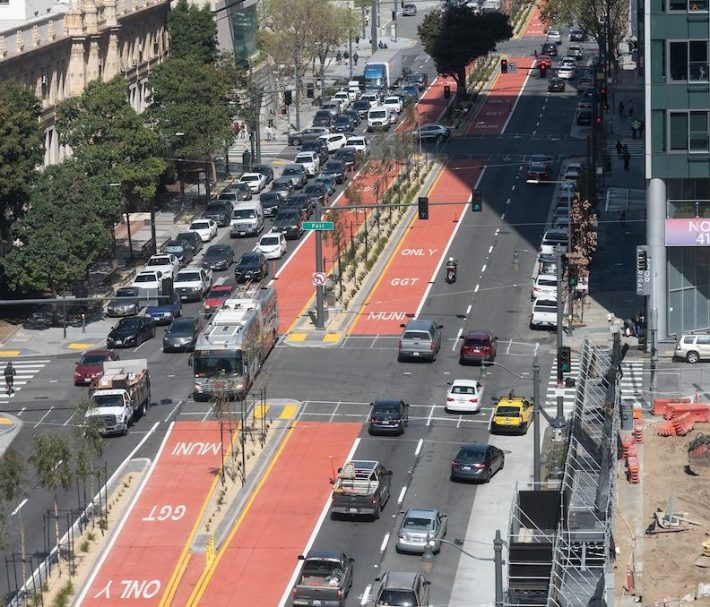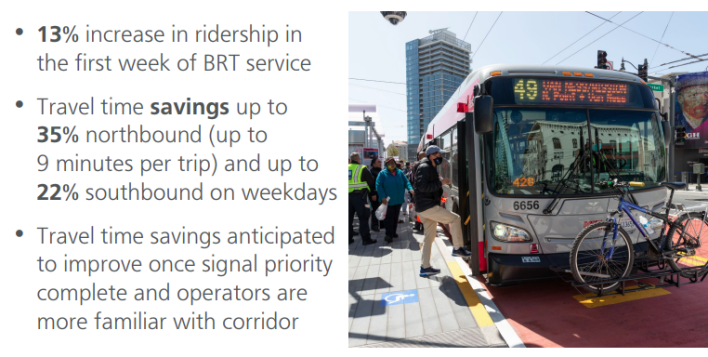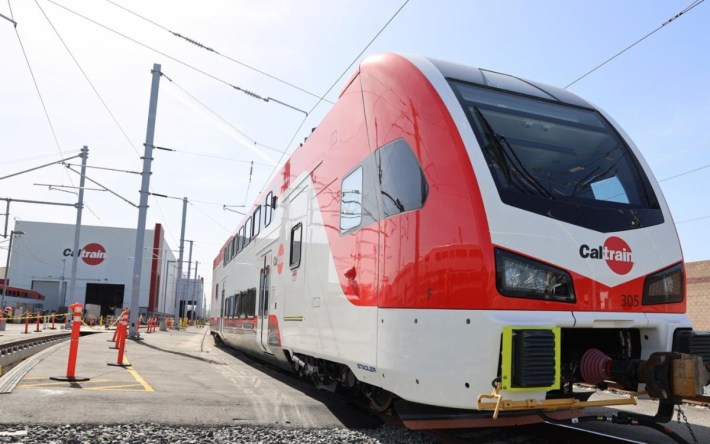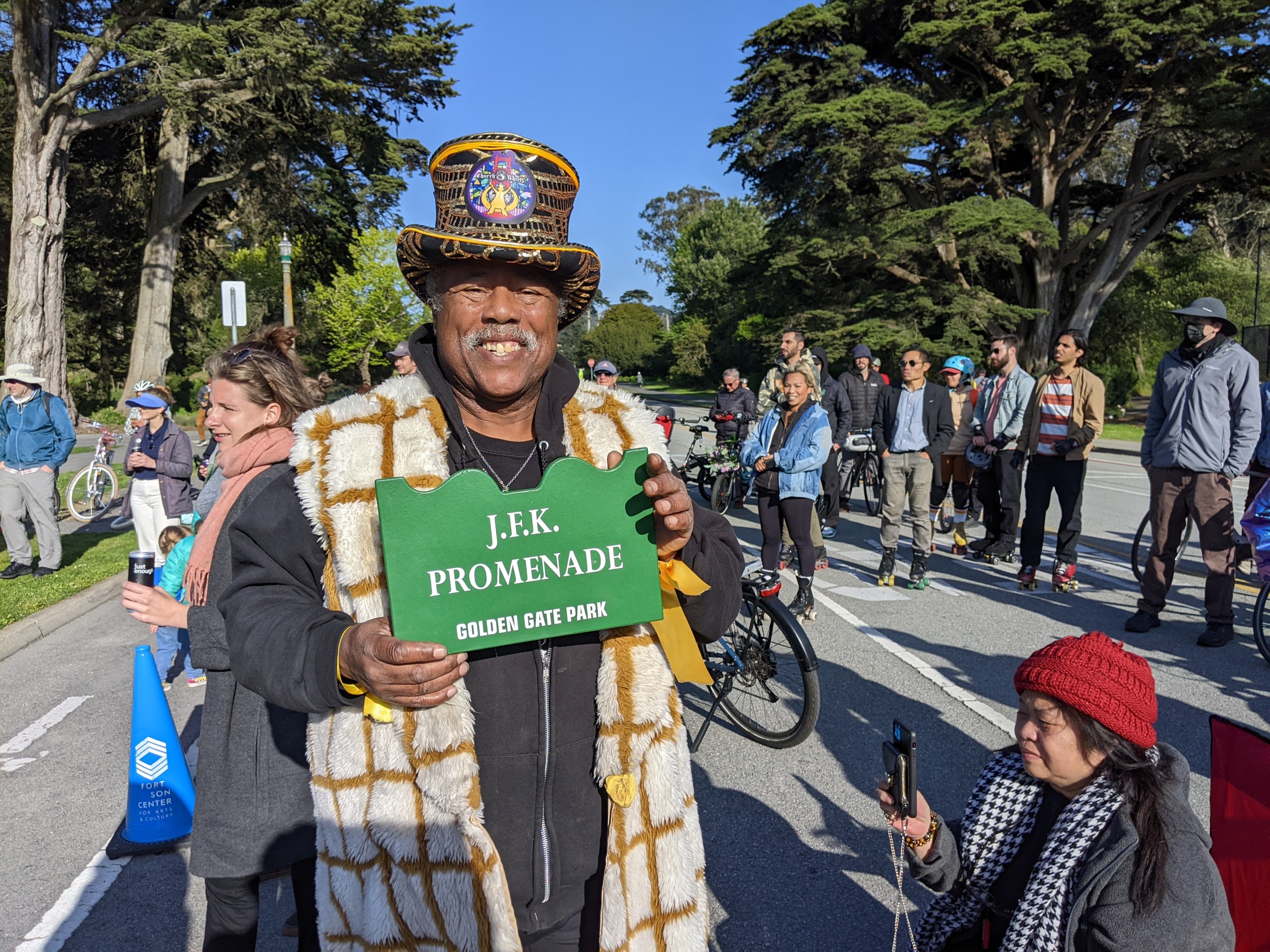Here are a few Streetsblog news nuggets to start your weekend.
Celebrating the J.F.K. Promenade victory!
A couple of hundred professional and part-time advocates, lawmakers, and their children came to Golden Gate Park next to the Conservatory of Flowers Thursday to eat tacos and cake and celebrate a long-fought, victory for safe streets. Notable attendees included David Miles, the Godfather of Skating, seen in the lead image, who has campaigned for over 40 years for car-free J.F.K. Also present was State Senator Scott Wiener, whose legislation, S.B. 288, made it possible. Without it, the Promenade would still be tied up in years of hearings and lawsuits under the California Environmental Quality Act, which has famously been misused in the past to block bike and ped safety projects. No doubt the de Young and other enemies of safe streets already have their lawyers sharpening their pencils, looking for another way to bring speeding, cut-through traffic back to J.F.K. But S.F. City Attorney David Chiu, who was at the party, will be ready.
I can’t adequately express this feeling in words. Long Live the JFK Promenade pic.twitter.com/cww4X8RDK5
— Christopher Kidd (@BikeBlogChris) April 29, 2022
All in all, it was a wonderful celebration of a long, exhausting fight that paid off with the biggest victory for safe and livable streets since the tear-down of the Embarcadero freeway. Congrats to everyone!
Van Ness Bus Rapid Transit already saving time for riders

The long awaited Van Ness Bus Rapid Transit project opened on April 1. So how's it doing? An SFMTA update already shows significant time savings, as in this chart below from an upcoming Muni staff presentation:

The report also shows that reliability has increased, with travel time variability decreased by up to 26 percent northbound and 55 percent southbound.
None of this should come as a surprise: if transit is given its own lanes, instead of being left to the vagaries of traffic congestion, of course it will perform better. The question now is when is the city going to get private cars out of the way on all of its major bus and light-rail routes?
Caltrain switching on its new trains

Streetsblog broke the news last month that Caltrain's first electric trainset had arrived. Caltrain has announced it is now testing the new equipment at its "Central Equipment and Maintenance Facility."
From a Caltrain release:
The new trains will go through different testing phases, from static to simulated, and eventually bigger system-wide testing that will ensure that all components of Caltrain Electrification function seamlessly together.
For now, according to published statements from Caltrain, this means testing doors, air conditioners, lights and other features. The entire testing procedure for the rolling stock should last about two years. If all goes according to plan (maybe don't say that out loud) the overhead wire will be ready by then and Caltrain electric service will begin.





